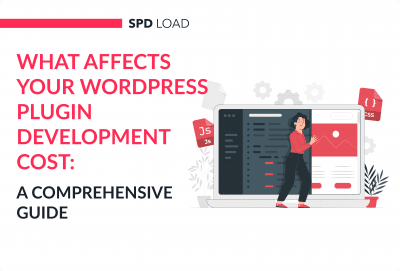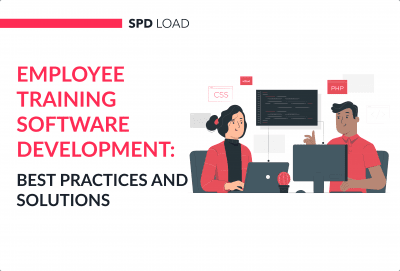Technical Due Diligence: Guide, Examples, and Checklist
- Updated: Aug 27, 2024
- 8 min
Technology due diligence is crucial for any business. Even though it’s a significant investment, it’s still a must, no matter the size of your company.
As dull as due diligence can be, it matters because most investors want to see it. It’s critical info VCs count on when talking deals.
For investors to feel good about funding you, they need to understand the guts of your biz inside out.
And what defines the guts comes down to whether your idea checks out, your systems and workflow make sense, and your intellectual property is legalized.
Investors and entrepreneurs win when there’s a technical due diligence report they can rely on.
From risk assessment to opportunity identification, our technical due diligence experts have you covered — get started today!
What is Technical Due Diligence?
If to explain due diligence shortly, it is an analysis and review of the product or service tech specification. It is an obligatory process before investment.
Investors use product due diligence to understand the competency of the product or service.
Here are common technical due diligence questions that help investors to understand the state of your business:
- What is the product development stage?
- Is your product or service scalable?
- How competent and credible is the team?
- How accurate are the team’s responsibilities?
- Is the company in a position of making execution on its current roadmap?
- What are the weaknesses and strengths of the business model? What risks can it potentially cause?
- Is your company able to meet the requirements?
These and more concerns will help investors moving forward with confidence. It is clear, that tech due diligence is a must-have item for any company. Especially as soon as you choose to outsource MVP development services.
But due diligence is not a one-off task. You need to have tools and teams that work to ensure all the objectives of the analysis are met.
It is also important to do due diligence in the early stages of your business. This is because as the product grows, you will be able to identify ways to scale your project in technical terms. 
Technical Due Diligence Checklist
Technology due diligence checklist is key to ensuring that your due diligence report is thorough.
It will also serve as a control manual to ensure that you proceed as planned to meet the objectives.
You might even think of hiring specialists to help you with a due diligence process. It’s not an easy venture.
One of the things the due diligence process depends on is a stage of a startup. No matter, where are you on the way from zero to hero (or better say, to unicorn startup).
Let’s consider four stages of startups.
- Stage #1 – Pre-Seed Stage
Seeding is a fundamental level of your startup.
It starts right after the product/service actualization takes place. The seeding stage entails try-outs in the market.
Investors, in their turn, can then gauge their performance.
- Stage #2 – Seed Stage
At this stage, your startup should be running as intended. Moreover, it should provide the solutions to the problems it intended to solve.
- Stage #3 – Series A
At this stage, the product is already well-established. Now your product or service is customer-focused, and thus, is scaling rapidly.
- Stage #4 – Series B
The product or service is now visible, and the market base is established.
At this stage, you are no longer a startup. Whatever happens next, now your business controls the niche.
During all these stages, something is happening with the company. And it doesn’t go unnoticed.
What does it mean?
The most important element of due diligence depends greatly on the stage of the investment.
For very early stage businesses, there is limited financial and operational information. As a result, understanding the founding team, the market, and any early customer feedback are the most important data points.
For series A companies, hopefully there is data that can prove the company has hit product-market fit. At this stage, investors will be interested in data points such as the stickiness of the product, churn rates, and unit economics.
Finally, for later stage investments, it’s most important to validate the financial performance of the business, how it differentiates against competitors, and the overall market opportunity.
Bruce Hogan, CEO at SoftwarePundit
Tracking customer retention is essential, and this churn rate calculator can help measure your customer loyalty.
Planning your own business? Here are essential business startup tips to guide you. 
Your company is expanding and the chances to find the right investors are increasing. And more so, they’ll come to you.
It’s an additional reason you need a review of a state of your business. A due diligence checklist can help you to convince investors that your business is worth investments in. Even if you gonna build a new Uber.
Here is the list of several issues for the due diligence checklist.
Infrastructure and Architecture
- Do you know the current state of product infrastructure?
- Have the team given proper attention to the place where the application is hosted?
- Does it sit on some cloud providers?
- Have they paid due regard to security issues?
These are the questions you need to answer before any investor knocks on your door.
They will need to know not only the state of the product’s infrastructure. A due diligence report is incomplete without legal documents.
Thus, you need to file all the legal documents.
Code Ownership
There is a maintainable code and scalable code. The maintainability of the code refers to the good quality of code.
In case the code is not maintainable, it will be rather hard to modify it. It means there is a high chain reaction of breakages that can start.
That is why it’s better to hire dedicated developers who do not rely on open source code and software. Instead, get experts who develop products from scratch.
Team Structure
It is paramount to have a reliable team of professionals that run your startup.
This is because the right team will propel the agenda of the company forward, and ensure that you meet the aim.
An investor, who buys equity in your business will need to understand who you are.
Everything is important — the person behind the idea, legal records, team relationships.
Before making a hiring decision, explore the cost of hiring a software developer and what factors to consider. 
Intellectual Property Status
Intellectual property refers to intangible products as a basis for human knowledge. Software is a great example.
Most technological startups are intellectual products. For you to claim a product or service, you need legal documents that certify the ownership.
Experienced entrepreneurs will ask for documentation certifying your ideas’ originality and operational permit. This is what forms the patent and copyrights for the startup.
In your tech due diligence report, you will need to include all the legal and updated documents that confirm your property ownership.
For example, Tinder has patented swiping and double-opt-in matches, so you can do it for your app too. Or try to build an app like Tinder in a better way.
Scalability
No one wants to put their money in a business that has no detailed plan showing growth projections.
As an entrepreneur, you need to make sure that the startup is in a position to grow under any circumstances.
Investors understand that some stages of a startup are not always promising. Besides that, a startup needs to have some space in the market.
Investors will use your scalability projections to calculate the ROI for their investment.
Here’s everything you need to know about building a brand from scratch, from concept to execution.
Get a strategic MVP to mitigate risks.
Technology Model
- Is your product able to meet expectations?
- Are you in a position to sustain hardship?
- What is the primary audience profile?
- Is your solution user-friendly?
- Is it able to solve the customers problem?
All these questions arise when you think of a business model.
A business strategy can help you summarize the aspects classifying your business model. When you have a defined business model, it becomes easy to execute your agenda.
In the future, it will be easier to integrate other services like subsidiary outlets and the likes.
Serious investors look for a suitable business model to cover the risks. 
Due Diligence Process Steps
The flow of the due diligence process may vary due to the business goals of the particular product or services.
But the main due diligence steps are:
- Get Ready For Cooperation
Before any legal process starts, an entrepreneur should be ready to act and negotiate openly.
Investors and business partners need to have trust-based relationships.
- Starting an Official Process
Once all the tech due diligence details and requirements are settled, the process is officially started. The company is now obliged to provide all the necessary documentation within a stipulated time frame.
Investor would ask a startup founder to prepare APIs documentation and architectural description.
- Referral Procedure
Once all the necessary documentation is ready, startup representatives refer it to investors and get ready for the next step.
- Getting Down to Business
Investors would like to assess the situation personally. Thus, it is better to arrange live meetings.
It is time to talk about business in detail. During this stage, investors are likely to ask specific questions to ease the decision-making process.
It is possible that there will be several meetings with investors with a lot of technical and non-technical issues discussed.
- Final Report
A final report is usually fulfilled by an independent person. Investors hire specialists to estimate all the startup benefits, drawbacks, possible risks and forecasted revenue. 
Why Product Due Diligence Matters
No matter how promising your startup is, it’s hard to convince experienced investors to join without a well-thought business plan.
A due diligence report coupled with a solid plan is a key to attracting business collaborations.
Apart from that, technology due diligence is essential both for you and for the business as an entity.
Here are some of the benefits of having due diligence for your startup:
- It proves the seriousness of your business. Investors are looking for entrepreneurs who have a plan. They need partners they can work with and business that is able to get returns on their investment.
- It gives credit to your business. The process of due diligence is supposed to debunk all the myths you have about your business. In short, a due diligence report reveals the actual state of the company.
- It helps planning your business. As an entrepreneur, you always need to look ahead. Moreover, you don’t have to make due diligence when investors are lining up to join you. This means that having the report beforehand gives you more chances in front of investors.
- Data security concerns. Forbes published an article on how compromised data of big firms led to losses and mistrust. Without proper records and analysis, your startup is vulnerable. Breaches that may lead to losses is another reason you need due diligence in place.
What’s Next?
We’ve covered how essential technical due diligence is for startup success. But identifying gaps is just step one.
The real opportunity lies in having an experienced dev team fill those gaps by building a bulletproof MVP.
That’s exactly what we offer – end-to-end product design tailored to launch startups built to scale.
If you need to turn a promising idea into a high-quality prototype ready to build a business on, get in touch.
Learn how to transform your MVP into a fully-fledged product with our tips on from MVP to full-scale product.












